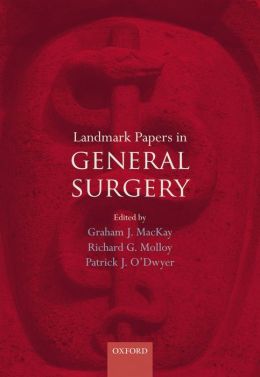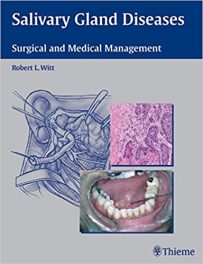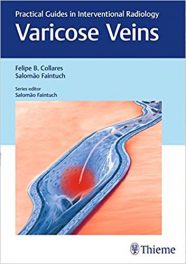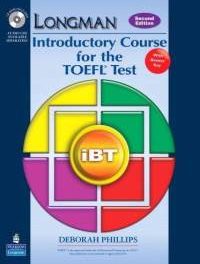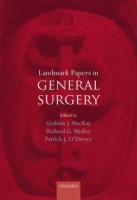 Editors: Graham J. MacKay, Richard G. Molloy, and Patrick J. O’Dwyer
Editors: Graham J. MacKay, Richard G. Molloy, and Patrick J. O’Dwyer
Publisher: Oxford University Press – 399 pages
Book Review by: Nano Khilnani
What are landmark papers, and what criteria are used to classify them as such? Landmark papers are essentially, writings of results of studies that revealed something that was not known before. The editors point out that there could be many criteria to categorize them as ‘landmark,’ but one of them certainly is that of having a significant impact on the day-to-day practice of surgery.
This volume contains a large range of studies, including:
• Case series
• Randomized trials
• Meta-analyses
• International guidelines
This book is part of the Oxford University Press series in landmark papers. Oxford has also published other landmark papers books, including those in allergy, anesthesia, cardiovascular medicine, nephrology and neurosurgery.
This book takes a look at the current state of knowledge in surgery and presents what is known in a concise and cogent manner. This type of clear format helps medical professionals – surgeons-in-training and practitioners as well – learn evidence-based decision-making and practice it.
Evidence-based medicine (EBM) has become the bedrock of clinical practice in today’s world of health care. Naturally, in the past, even as far back as in the eighteenth century, the results derived and knowledge acquired from new types of surgery were helpful and sometimes even essential in doing similar subsequent procedures successfully. But today, EBM has assumed paramount importance in the learning and teaching of surgery.
In line with EBM, the material in this book is presented in an objective manner, with comments added at the conclusion. Candidates preparing for post-surgical examinations as well as those beginning their surgical training will therefore find this book very useful because it is based on empirical data obtained from actual work done.
This book starts with a chapter on surgical trials and the methodology behind them. Later chapters (not necessarily in alphabetical order) are on: breast surgery colorectal surgery, emergency surgery, endocrine surgery, esophagogastric surgery, general surgery, hepatopancreaticobiliary surgery, transplant surgery, trauma surgery, and vascular surgery.
A useful list of abbreviations is provided at the beginning of this book and an appendix on levels of evidence is presented at its end. Twenty-seven specialists, most of them surgeons, contributed the material for this book.
Each paper featured in this book uses a common template to make studying easier. Almost invariably you will find the following elements in almost the same order:
• Study References, with Main studies and Related references as subheadings
• Study Design, with a table containing the following items: Level of evidence, Randomization, Number of patients, Primary outcome, and Follow-up (months).
• Results, with a table containing the following items: Pain scores, Tenderness scores, Patient deemed comfortable, and Incorrect diagnosis/management
• Conclusions, usually two or more.
• Critique, e.g. “the study suffers from methodological shortcomings.”
To give you an example, chapter 7 on Vascular Surgery features a number of studies on a particular kind of surgery on one of the carotid arteries which supplies blood to the head.
That surgery is called carotid enadartectomy (CEA) done to relieve stenosis or constriction (narrowing) of blood vessels. These studies on CEA were done in Europe (called the European Carotid Surgery Trial or ECST) and in North America (called the North American Symptomatic Carotid Endartectomy Trial or NASCET)
This series of studies involved 2,226 patients on the two continents who underwent this procedure. The editors point out: “The practice of carotid endartectomy (CEA), although widely practiced previously, was put on a firm scientific footing for the first time by the publication in 1991 of two multi-center perspective randomized studies comparing surgery with best medical therapy (BMT).”
The mortality rate from these surgeries was 7 percent in ECST and 6.7 percent in NASCETT. Conclusions from data drawn from these studies? “CEA is useful for stenoses of 70 percent or more and this surgery is harmful for patients with stenoses less than 50 percent and also for those who have near occlusion.”
“In the group with moderate stenoses, CEA is beneficial in men but not in women. This finding is accounted by the fact that in this group, the risk of stroke in women on medical treatment is less than in men. In addition, the surgical risk is greater in women.”
This book is a valuable single resource for surgeons and surgical trainees to keep abreast of the vast research out there on outcomes of various types of surgery. This is a great evidence base available all put together at one’s finger tips.
Graham J. MacKay is Consultant Colorectal Surgeon in Lister Department of Surgery at Glasgow Royal University in Glasgow, United Kingdom.
Richard G. Molloy is Consultant Colorectal Surgeon in the Department of Surgery at Gartnavel General Hospital in Glasgow, United Kingdom.
Patrick J. O’Dwyer is Professor of Surgery in the Department of Surgery at Gartnavel General Hospital in Glasgow, United Kingdom.

